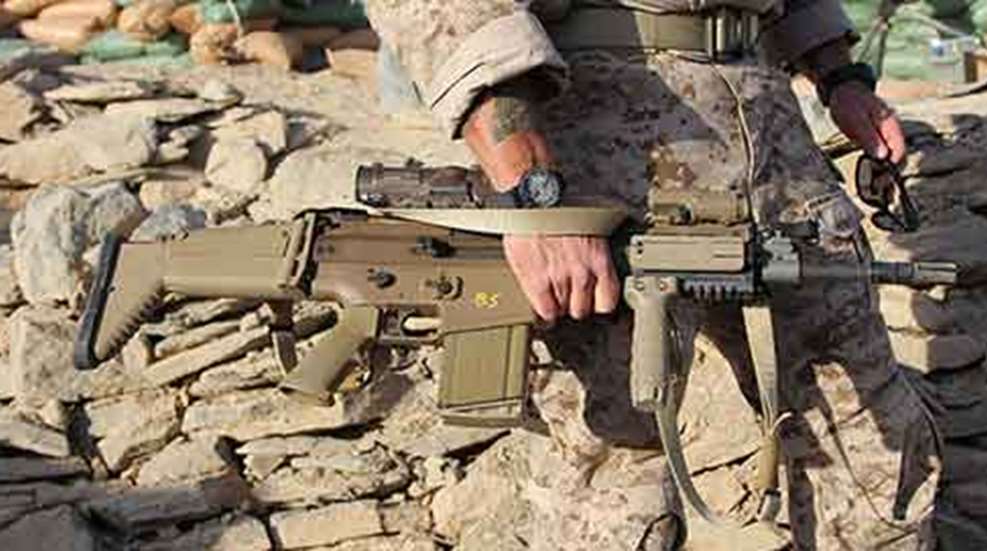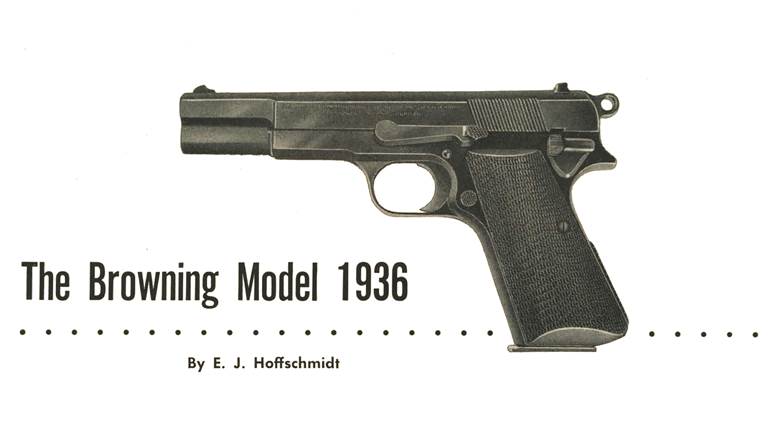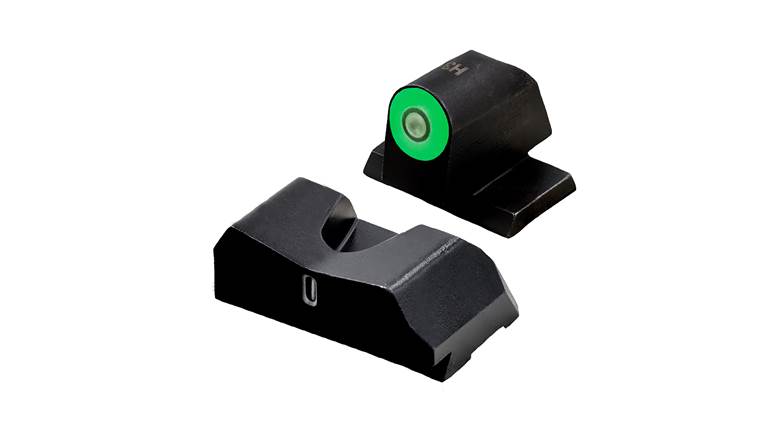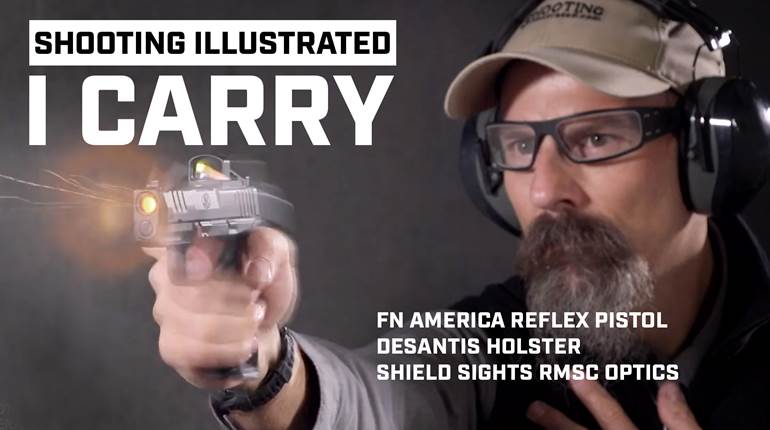
“Ten Minutes!” The crew chief yells, trying to overcome the sound of the dual rotors of the MH-47.
I tilt down my NODs and turn the switch of my PEQ15 laser to the high Infrared setting.
"Six Minutes!”
“Three Minutes!”
I bring myself to one knee. One hand on the pistol grip of my M249 SAW and one on my safety tether that is secured to the floor of the bird.
“Thirty Seconds!”
The 25 tons of flying metal sharply flares, and touches ground. I release my tether and run out into a cloud of fine Afghan sand. My platoon and I break into a dead sprint towards the known Taliban compound and surround it.
This is how most nights began for me during my deployment to Afghanistan. The adverse conditions of South Asia and high intensity of the Special Operation Mission demand an adaptable, and lightweight weapon system. Although I am a huge fan the M16 family of rifles and carbines, especially the SOPMOD M4A1 Carbine, sometimes the mission requires more.
That’s where the SCAR Heavy comes in to play.
The SCAR (Special Operation Forces Combat Assault Rifle) was developed by Fabrique Nationale Herstal (FNH) in response to the U.S. Army’s interest in fielding a modular, reliable, and lightweight weapon system chambered in 7.62x51 mm NATO and 5.56x45 mm NATO. The result is a gun that meets all those expectations. FNH ultimately placed two models in production: The SCAR Mk16 (5.56 x 45 mm) better known as the SCAR-L (Light) and the SCAR Mk17 (7.62x51 mm), SCAR-H (Heavy). After field testing both models, the Army decided to drop the SCAR-L program. FNH subsequently developed a conversion kit that, in less than five minutes, converts the Heavy to 5.56x45mm. The upper receiver and buttstock are the main common components between the two calibers.
Soon after the military began fielding it in limited numbers with select units, FNH introduced two commercial semi-automatic versions of the SCAR for civilian sales: the SCAR 16S in 5.56x45mm and the SCAR 17s in 7.61x51 mm.
So what are the differences between the military SCAR Mk 17 and the civilian SCAR 17s?
Well, they are few in number, and that is one of my favorite aspects of this weapon system. The most noticeable difference is that the Mk17 is select fire while the SCAR 17s is semi-automatic only. The Mk17 offers three barrels-13”/16”/20”-whereas the 17s offers only a 16.25” from the factory. Beyond that, when you unpack a SCAR 17s from its shipping container you are holding a rifle that is almost identical to the one that Special Operations troops carry on combat missions in Afghanistan.
Weighing in at an evenly distributed 8 lbs., the SCAR 17s comes standard with a collapsible and folding stock with an adjustable cheek riser, 360 degree MIL-STD 1913 Picatinny rail, folding front and rear iron sights, ambidextrous selector and magazine release. The reciprocating charging handle is ambidextrous and can be moved from one side of the receiver to the other with ease. It can also be used as a forward assist in the event that bolt fails to go into battery fully.
The SCAR 17s is outfitted with a 16.25” barrel with 1:12" twist rate. This is not just your run-of-the-mill barrel, but rather one that is chrome-lined, cold-hammer-forged, and free floating. The barrel is held in place by six small screws that can be quickly removed to replace a barrel length specific to mission requirements. Though the 17s only comes with the 16.25”, other barrel lengths are becoming available to the civilian market. The SCAR 17s’ barrel comes outfitted with a PWS FSC30 muzzle break.
So what makes the SCAR tick?
First of all, it utilizes a short-stroke piston housed in the gas block. The bolt carrier extends above the barrel and contacts the gas block. When the gun is fired, a small piston housed within the gas block rapidly strikes the face of the bolt carrier. The shooter has the ability to operate in two gas settings by the flip of the gas regulator located on the gas block. The 12 o’clock position is used for unsuppressed firing and the 10 o’clock position for suppressed. Similar to any M16 variant the SCAR uses a six-lug, rotating, and locking bolt.
So what does the SCAR Heavy have to offer both the operator and the civilian shooter?
First and foremost-7.62x51 mm. Whether you are a hunter going after a 300-lb. pig in Georgia, or a military member fighting the Global War on Terror, the 7.62 NATO cartridge provides sufficient energy to engage targets at 800 meters and beyond.
For me, practical ergonomic characteristics are critical to the success of a firearm’s design and very often 7.62 mm rifles come up a bit short in that category. With this system, however, the safety selector, magazine release, and charging handle are conveniently located, the buttstock is stoutly built and comfortable, and the weight is evenly distributed across the length of the rifle. One shortcoming relating to practical ergonomics is the SCAR's short rail system, which leaves a large amount of exposed barrel. For many, this is not an issue. For me, I prefer to be able to extend my hand farther out, supporting 70 percent of the rifle’s weight with my off hand and 30 percent with my shooting hand.
How versatile is the SCAR-H?
While serving in the Army, I saw it being used in various capacities. Everything from snipers using it as a long range precision gun, to Assistant Gunners carrying the SCAR to have caliber compatibility with the M240. Often team leaders carried the SCAR-H with the 5.56 mm conversion kit installed outfitted with the 10” barrel to have a compact gun that does not interfere with detaining terrorist. Due to confined cabins, I preferred using the 5.56 mm SCAR-H when part of an Armored Personnel Carrier crew.
Whether you are hunting, long-range shooting, competing or using it as a go gun, it is going to perform appropriately.
The SCAR-H has been on the market for a few years now. Due to its popularity, a wide variety of aftermarket parts and accessories are being produced. Although little is needed to improve the SCAR, there are a few modifications that would make it the ultimate system. For one, adding an extended rail. Some of the companies to note include FNH, Midwest Industries, Vltor, and PWS (Primary Weapons Systems). Most extended rails on the market are priced under $250.
The stock trigger is perfectly acceptable for a combat battle rifle trigger. That being said, if you intend to use the SCAR-H for precision shooting or hunting a lighter crisper trigger should be a consideration. The Geissele’s 2-stage Super SCAR trigger and the Timney SCAR trigger are both high in quality and are priced in the mid-$300 range.
So is the SCAR-H perfect? No. It is however, lightweight, modular, reliable and accurate. It’s comfortable to carry and shoot, and compact if needed. It disassembles with ease and requires little cleaning after being shot.
With the SCAR, it is only beginning of an evolutionary cycle. Over next decade, we are going to see that this system is a force to be reckoned with.





































